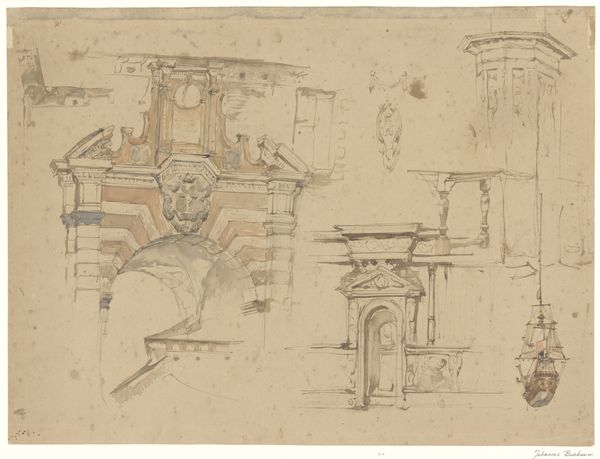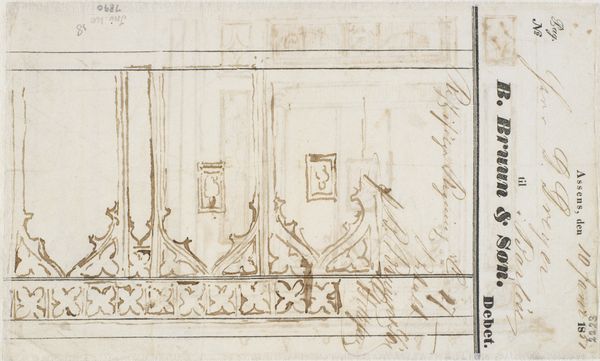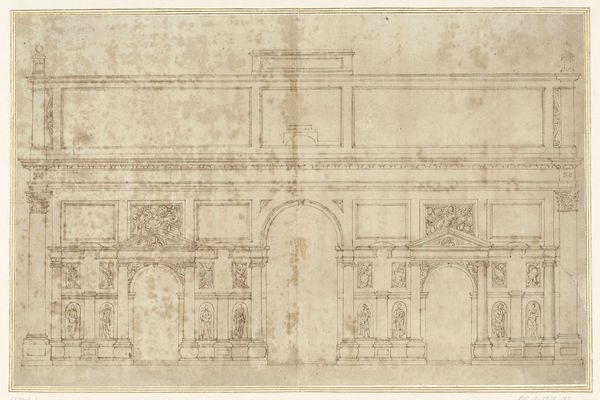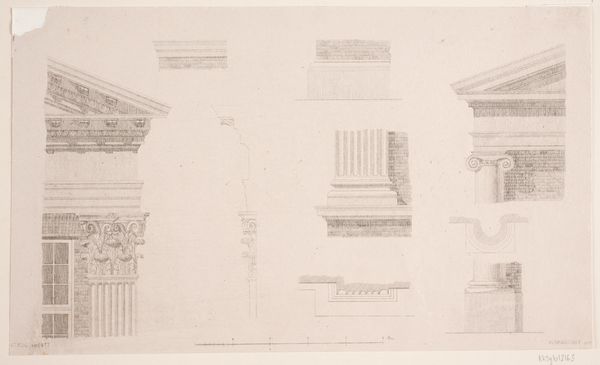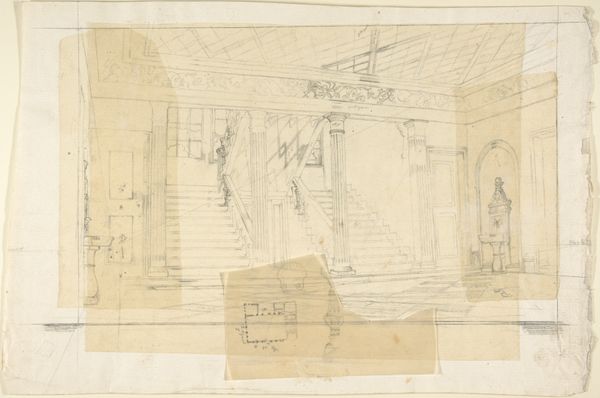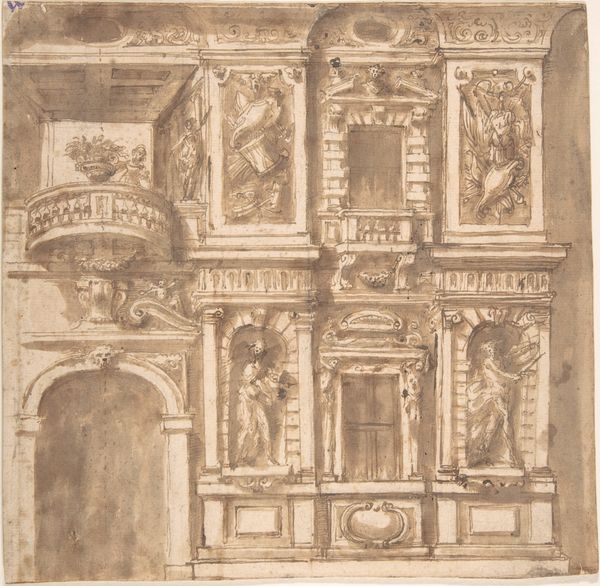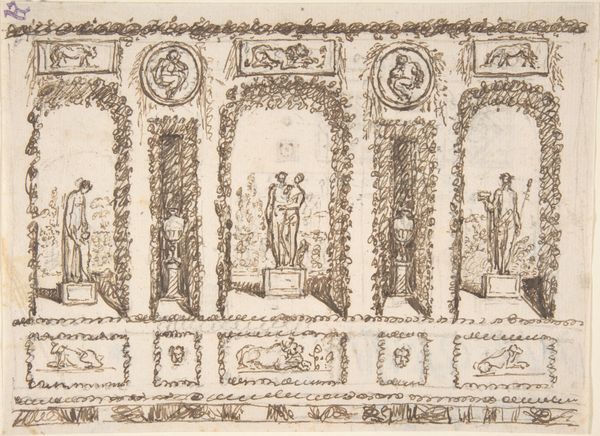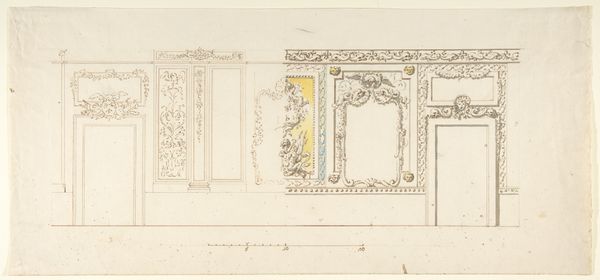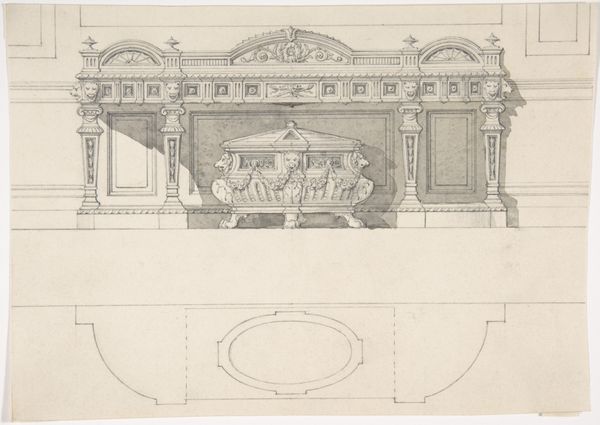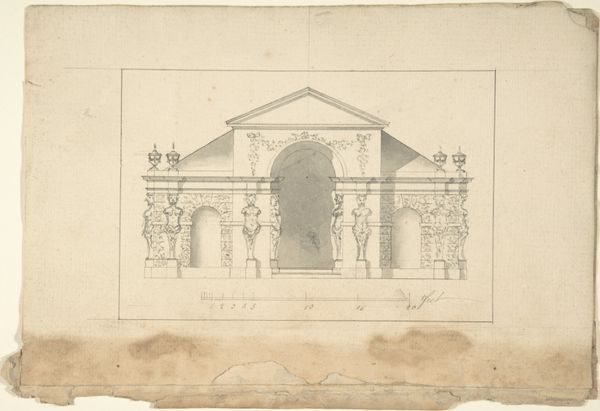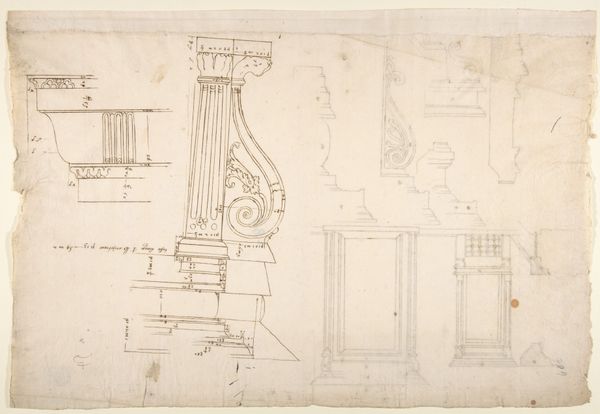
drawing, watercolor, pencil, architecture
#
drawing
#
11_renaissance
#
watercolor
#
pencil
#
history-painting
#
italian-renaissance
#
watercolor
#
architecture
Dimensions: 5 1/4 x 7 11/16 in. (13.3 x 19.6 cm)
Copyright: Public Domain
Curator: Oh, wow, look at this wispy, almost ethereal sketch! It’s so light, barely there, like a forgotten dream of grandeur. Editor: Indeed. We are looking at a work titled "Design of an Architectural Monument (Tomb?)," a drawing likely created between 1850 and 1880 by an anonymous hand, held here at the Metropolitan Museum of Art. It appears to be rendered in pencil and watercolor. Curator: Tomb, huh? Makes sense. There's this pervasive sense of hushed reverence, and also maybe a little bit of decay. The incomplete parts add to that feeling, like it's slowly dissolving into the paper. Editor: I’m struck by the anonymity of its maker. How many unrecognized artists and designers contributed to the architectural landscape of that era, only for their work to remain uncredited? Curator: It’s a ghost story in pigment, right? I’m seeing echoes of Renaissance architecture, but also a unique, almost haunting interpretation. Those arches! It looks a little bit Roman. Editor: The drawing merges Renaissance sensibilities with a possibly Neoclassical vision, reflecting the revival of classical forms in 19th-century architecture. I imagine a designer, grappling with how to reconcile past glories with contemporary needs, thinking of course, of legacies and the monumentalization of power through architecture. Curator: You said 'power,' and suddenly I see this in a whole new way. Was this design actually intended as a monument of power, maybe celebrating wealth, legacy and influence? This impacts our view as contemporary viewers. Editor: Absolutely, and further we can note that monumental architecture historically enshrines patriarchal systems and reinforces societal hierarchies, often silencing marginalized voices. It invites us to examine whose stories are deemed worthy of being memorialized, and at what cost. Curator: Huh. It makes you wonder if that original architect wrestled with that same question. This sketch makes you see more than you thought you would see! Editor: Precisely. By confronting the monument’s historical implications, it forces a critical engagement with power, narrative, and our collective responsibility to represent history with inclusivity.
Comments
No comments
Be the first to comment and join the conversation on the ultimate creative platform.
